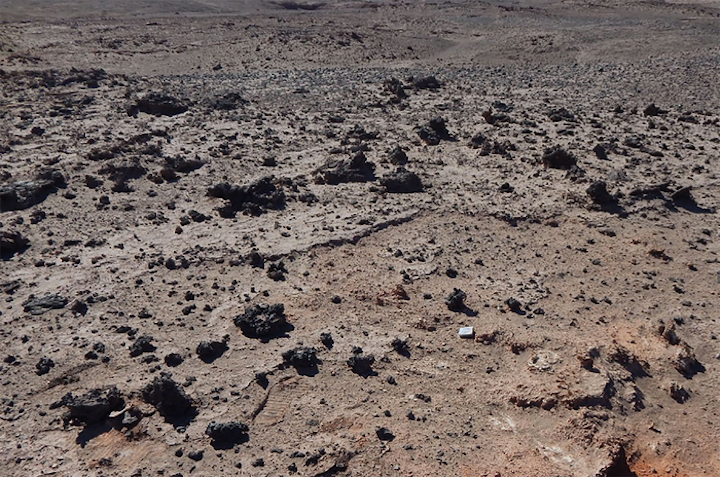6.11.2021

Dark silicate glass is seen against the Atacama Desert in northern Chile. (Image credit: P.H. Schultz/Brown University)
Be grateful you weren't in what is now Chile's Atacama Desert 12,000 years ago.
Today, a 47-mile (75 kilometers) swath of the desert is strewn with strange dark, glassy rocks that have long puzzled scientists. New research finds that those rocks are quite similar to comet particles collected by a NASA mission. The scientists behind the work now think that all those years ago, one or more huge comets exploded together in the skies over the region, causing tornado-force winds, scorching a wet, grassy landscape, and scattering the area with warped and twisted glass that still contains minerals generally found only in meteorites.
"This is the first time we have clear evidence of glasses on Earth that were created by the thermal radiation and winds from a fireball exploding just above the surface," Pete Schultz, a geologist at Brown University in Rhode Island, said in a statement.
"To have such a dramatic effect on such a large area, this was a truly massive explosion," he said. "Lots of us have seen bolide fireballs streaking across the sky, but those are tiny blips compared to this."
Schultz and his colleagues wanted to compare the strange Chilean glass, which ranges from dark green to black, with the work of a NASA mission called Stardust, which launched in 1999. Stardust visited a comet called Wild-2 to trap particles of its dust, which the spacecraft delivered to Earth in 2006. The samples were scientists' first-ever pristine samples of cometary dust from out beyond the orbit of the moon, according to NASA.
For the new research, Schultz and his colleagues collected 300 pieces of the strange glassy rock to analyze from two patches of the region. In addition, the team cut thin, polished slices out of 20 of those samples to study under a microscope. In all of those slices, the researchers found dozens of grains and fragments that didn't match the region.
Those anomalies included a mineral called troilite, which is typically found in meteorites, and decomposed zircons that suggest the samples reached temperatures hotter than 3,000 degrees Fahrenheit (1,670 degrees Celsius). Other traits the researchers noted aren't exclusive to meteorites but are quite common in an extraterrestrial context and match what scientists have seen in meteorites or the Wild-2 samples.
"Those minerals are what tell us that this object has all the markings of a comet," Scott Harris, a planetary geologist at the Fernbank Science Center in Atlanta and a co-author on the new study, said in the same statement. "To have the same mineralogy we saw in the Stardust samples entrained in these glasses is really powerful evidence that what we're seeing is the result of a cometary airburst."
In addition, the researchers noted signs of a dramatic past on the glass, which show "sliding, shearing, twisting, rolling, and folding (in some cases, more than twice) before being fully quenched," the scientists wrote in the paper.
Scientists have considered other scenarios to explain the strange glass over the years. At the time, the region featured oases and grassy wetlands, so some have suggested that vast grass fires could have melted the sandy soil to form the glassy rocks.
"There may be lots of these blast scars out there, but until now we haven't had enough evidence to make us believe they were truly related to airburst events," Schultz said. "I think this site provides a template to help refine our impact models and will help to identify similar sites elsewhere."
Scientists can't yet precisely date the glassy rocks, although other research on the phenomenon has suggested the strange rocks formed between 12,300 and 11,500 years ago.
Intriguingly, that's close to the time when the remains of large mammals like horses and ground sloths stop showing up in the fossil record, and around when some scientists think humans started building settlements in northern Chile — although there's no way to know right now whether any of the three events are connected.
"It's too soon to say if there was a causal connection or not, but what we can say is that this event did happen around the same time as when we think the megafauna disappeared, which is intriguing," Schultz said. "There's also a chance that this was actually witnessed by early inhabitants, who had just arrived in the region. It would have been quite a show."
The research is described in a paper published Tuesday (Nov. 2) in the journal Geology.
Quelle: SC